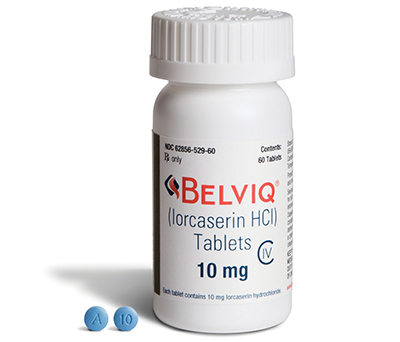Despite recent attempts to boost the market profile of Belviq, partners Arena and Eisai appear to be facing the same woes as their prescription-obesity treatment peer Vivus: disappointing sales.
Citing IMS Health prescription data, Credit Suisse analyst Lee Kalowski wrote Monday that he was lowering expectations for the company’s third-quarter results by $16 million, to $3 million, as opposed to $19 million. Kalowski’s optimism for fourth quarter has taken a similar hit. The analyst dialed back expectations from $36 million to $12 million, in addition to cutting projections through 2018.
Yet Kalowski noted that the company will have to provide “exponential growth” to hit even his reduced sales expectations for 2014 and 2015. These targets also pushed Kalowski’s timeline for Arena’s move into the black to 2017, instead of 2016.
The 200 sales reps that marketing partner Eisai has put into the field may be one reason for the company’s sluggish performance. The Credit Suisse analyst wrote that the field force of 200 “is close to saturating the existing prescriber base that can be serviced” by a team this size, and so more people behind the drug may be needed to propel sales.
This is in addition to improving reimbursement rates and success connecting with consumers, stumbling blocks with which Vivus, whose prescription weight-loss drug Qsymia hit the market first, continues to struggle. It, too, has been dinged over what many analysts have called a too-small sales force. A shareholder insurrection booted the Vivus executive staff, which remains in flux after health issues forced then-new CEO Tony Zook to abandon his post. The AstraZeneca alum had a history of establishing blockbusters and was replaced by Johnson & Johnson alum Seth Fischer last month.
Arena/Eisai’s marketing approach has included free samples. Vivus has pursued a similar tack, offering starter samples, while also trying to woo payers to put the medications in their formularies.
Among Kalowski’s concerns are that 60% of Arena’s second-quarter prescriptions were for free trials of obesity drug Belviq, and IMS data show that this trend has only continued. Kalowski noted an additional layer to these numbers, which is that sales go into the revenue column when pills hit distributor shelves, as opposed to when a prescription is actually filled. “The entire Q2 and Q3 demand could be filled with inventory burn-off from the June launch supply and Q4 would still be starting above a normal inventory level” he notes.
The companies have pursued a variety of strategies to market the drug, including showering employers with information that outlined the relationship between obesity and the direct and indirect ways it affects their costs. The resource also included tools like an action plan that consisted of a list of ways employers could help staff maintain or reduce their weight, though efforts like creating walking paths, establishing healthy cafeteria options and covering prescription weight-loss medications.
Another information piece talked about using smoking-cessation efforts as an analog for how employers could promote the idea of healthy weight and healthy weight goals. These newsletters were part of an effort called Closing the Gap: Obesity Management for Employers. Eisai helped created the content that was distributed by Benfield.
The consumer complement came about a month later, in the form of a Believe support program for Belviq patients, unlike Vivus’s QandMe, which was open to the general public. Like Vivus’s DTC effort, Eisai is relying on HCPs to tell patients about the consumer site, and is using sales reps and the physician website to promote the patient resource.
Grabbing mindshare, let alone sales, is only going to become harder. San Diego-based Orexigen Therapeutics, which has Takeda as its marketing partner, announced Wednesday that it filed its prescription weight-loss drug Contrave for approval with the European Medicines Agency. The company said in a statement it could have the drug on the European market by 2015 if it scored an approval next year.








